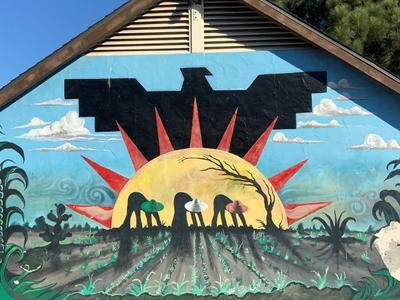A community’s history can have the most immediate and direct effect on students’ lives. “Local history helps students better understand their community, as well as the inequities in education, poverty, health outcomes and other issues that they see around them every day,” writes Coshandra Dillard in “Recovering and Teaching Local History.”[1] Given these histories are often not easily accessible in textbooks, it’s up to educators to bring place-centered resources into the classroom, as well as teach students the skills to uncover and contextualize the events of their community’s past. And even if you are teaching world history, there are still many connections you can create to local history, such as “the history of indigenous settlements, patterns of im/migration, or how geography/culture has shaped the settlement and economy of your community today and in the past.”[2]
Here are some other tips to center local history in the classroom:
1. Make it Relevant!
Use place-centered resources with your students. Making meaningful connections between their world and the past has the potential to deepen student inquiry skills and overall historical context and understanding. According to the National Endowment for the Humanities (NEH), “A place-responsive approach to teaching U.S. history and culture can bring lessons alive for students and help close gaps that emerge when looking to answer the question of relevancy and application in students’ lives.”[3]
Some local spaces students can engage with to set the foundation for these local connections include:
- Museums
- Local historical sites
- Newspapers
- Local First Nations community centers and organizations
- Cultural associations and clubs
- Parks
- Local schools and universities, archives and records
- Libraries
- Oral history collections
- Family history archives
- Local senior centers and communities
For a strong example of a “place-responsive” resource, view this student activity from ABC-CLIO’s The Asian American Experience database, “The History of San Francisco’s Chinatown.”
2. Ground Students in Time and Space
Use local historical photographs and maps to give students the “lay of the land” of their communities across time. In collecting primary source materials from their families or local agencies and “in analyzing these primary sources, students examine the interplay between national, state, local, and personal history,” states the Library of Congress[4], which houses many of the nations’ historical maps and images.
To get started, students will need support and scaffolding tools—like this activity on analyzing historical maps. This activity from ABC-CLIO’s United States Geography database also offers a place-centered model for how to bring deep questioning to photograph analysis.
3. Go to the Source: Bring Human Stories into the Classroom
Research oral narrative archives and engage in community interviews to get to know local voices, past and present. Oral narratives can take many forms, so in addition to letters, diaries, and interviews, open the classroom to poems, songs, and more. In analyzing these primary sources, students not only get to know the lesser-known stories of their community, but they also gain an understanding of various oral traditions and interviewing techniques.
For inspiration, this interview with Barbara Stripling and Ruth Mitchell, a librarian in Eureka, California, discusses a human library program where guest speakers from the community share their stories with students. This Oral History Analysis Guide offers students a template of questions to ask when analyzing an oral narrative.
4. Use the Local News
Explore local, contemporary news stories to make meaningful connections to the past. “History is happening in the world around us but the issues are rooted in the past,” Maureen Costello, director of Teaching Tolerance at the Southern Poverty Law Center (SPLC), tells the National Education Association[5]. Looking deeper at current events and tracing issues in the community back in time can be a meaningful exercise in inquiry that encourages “big picture” connections, even when these connections lead to hard places. Exploring newspaper archives for local stories and historical cartoons is also a sure way to analyze historical perspectives and biases.
For hands-on applications, try this activity breaking down news headlines and examining potential journalistic bias, or this activity on historical cartoons offering valuable tools for visual analysis.
5. Creating Content like a Historian
Many students are already out in the world creating content; now how about creating content like a historian?
Encourage students to engage deeper with their local histories by taking their research outside the classroom in an enduring way. Students can participate in historical excavation, documentation, and preservation projects within their communities. Use the Library of Congress “Memory Project” as a template: students collect primary sources from their personal and community spaces then create a community archive. The website Asian American History on the Central Coast is also a strong example of a student-led, place-centered documentary project. Created by Emily Pan, a second generation Chinese American and senior at San Luis Obispo High School, the website is a localized geographic archive of Asian American history in California.
[1] “Recovering and Teaching Local History.” Teaching Tolerance, https://www.learningforjustice.org/magazine/recovering-and-teaching-local-history
[2] Berkeley History-Social Science Project. https://ucbhssp.berkeley.edu/
[3] “Teaching the ‘Hard History’ Behind Today’s News.” National Education Association, https://www.nea.org/advocating-for-change/new-from-nea/teaching-hard-history-behind-todays-news
[4] “Creating a Primary Source Archive: All History Is Local.” Library of Congress, https://www.loc.gov/classroom-materials/creating-a-primary-source-archive-all-history-is-local/
[5] “Teaching the ‘Hard History’ Behind Today’s News.” National Education Association, https://www.nea.org/advocating-for-change/new-from-nea/teaching-hard-history-behind-todays-news




